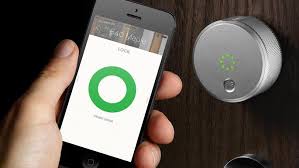
Everything You Need To Know About Smart Locks
Over the last few years, the popularity of smart locks has firmly increased. Many users and homeowners were not so sure to upgrade from the traditional system of ‘lock and key’ when at first the smart locks were introduced in the market. In case it was a matter of safety, they could very well upgrade the locks by using additional screws or by changing the existing deadbolt with one of a longer throw. Yet, they provide much more than just change in the security of the homeowners. The automatic nature of the smart locks provides an additional layer of efficiency and convenience to its users that the traditional locks do not provide.
Smart Locks- What Is It?
The first and foremost function of a lock when it is engaged is to permit or bar entry. It is the most common way to stop intruders and burglars. A smart lock performs this conventional function, but they do this with different tools and in a different way. After receiving the appropriate set of direction from an authorised device, that makes use of cryptographic key and wireless protocol, ascertaining the smooth carry out of the authorisation process.
The protocols of wireless communication are essentially rules and digital descriptions that are required and govern the data transmission between devices. Smart locks are operated mostly through a smart home hub, smart phone, etc, and it is necessary to be able to transmit and receive data for these devices. To keep the data transmission secure between the devices these protocols are required. Protocols of wireless communication are meant to cover and oversee areas of mistake detection and also its correction, authentication of signals and between devices signaling.
In order to ascertain that the transmission of data remains private between the devices, cryptographic keys are utilized in concurrence with the communication protocol. When the cryptographic keys are used with the protocol of wireless communication, the data transmission is kept effectively secure. This is necessary to make sure the smart locks are functioning in the way they are intended to.
The primary devices which are usually key fobs or smart phones communicate with the smart lock using these elementary functions in varied ways. Smart locks are made to receive signals from the primary device that disengages or engages the lock mechanism. The transmission is analyzed, when the data is collected from the primary device. It is then that the action is carried out according to the data transmitted. The act of managing to transmit and receive data is what grant these locks to communicate with some other devices also apart from the primary one. Some smart locks these days come with the ability to be restrained in the IoT environment, that makes it a more favorable option for building a smart home.
Smart Lock Options
There are many people who wonder how to distinguish between bad and good smart locks, if there are such things as good or bad smart locks. The gist of the matter is people ponder about the right options they have in case of a smart door lock.
However, when it comes to amalgamating the smart locks with their homes, there are quite a few options for homeowners. Well there are few cases, where the homeowners are not able to give up the traditional key and lock system. In such cases, homeowners can supplement smart door locks to this system and control the dead bolt.
Trouble with Smart Door Locks
Like most of the devices smart locks are also not perfect, there are few errors that make this technology fails from being perfect. There are some points that the smart locks industry should address. By doing so the industry will be able to provide the people with locks which really revolutionize the product.
- One of the biggest disadvantages with smart locks is the power failure. Many of the smart door lock models operate either on live current or battery power. In the case of interruption of the locks power supply, it becomes potentially unsafe and the useful feature will be a waste.
- There are various wireless protocols which are used to built smart locks. Due to this very reason, many homeowners have to go through trouble if the smart lock is not adaptable with the home automated system or the smart phone. And in order to have full access to the capabilities of the smart door locks.
- Due to the power issues in both the homeowner’s smart phone and the smart lock, it becomes a challenge to be completely key less, and that is what the manufactures of smart lock aim to achieve. Some of these smart door locks connect with the smart phones via Wi-Fi or Bluetooth. These are known to acutely deplete the battery life of the phone, leaving the homeowner key less.
So if you want to make the best usage of smart door locks, it helps to know what they are and how do they function. And if in any problem you always have the local locksmith at your service.
